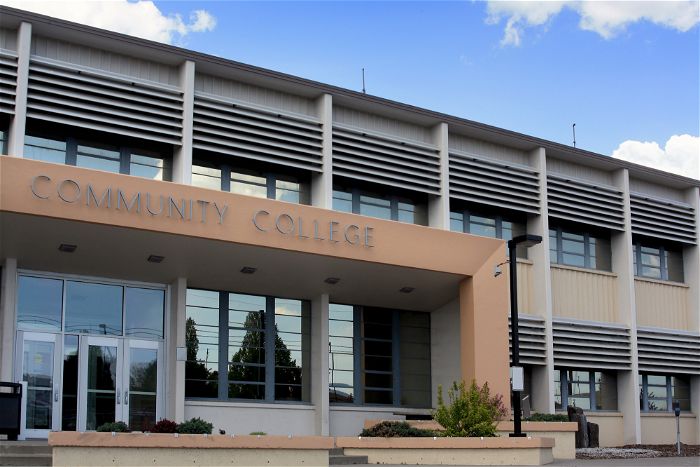
What It Takes to Guide Students and Jobseekers to High-Value Careers
October 17, 2022
At a Glance
Community college and workforce development leaders share bold actions and policy recommendations in the latest episode of JFF’s policy podcast.
On the Front Range in Colorado, the Community College of Aurora is eliminating several degree and credential programs with limited economic value for students. But it’s not a case of slash and burn. The college is pivoting faculty positions to new programs more responsive to the region’s workforce development needs, and it plans to bring business and industry to the table to co-create curricula and co-deliver work-based learning experiences that lead students into jobs out of college.
Meanwhile, in Southern California, the San Diego Workforce Partnership has set up shop in local public schools to help students discover their career interests and to coach them toward planning for the future, starting well before high school. The workforce board has also raised funding to expand job training programs in fields with strong demand for talent and has taken over the operation of its region’s American Job Centers to ensure that frontline career services staff, training program providers, and business services representatives are working toward the same end goals: matching jobseekers to in-demand jobs that pay family-sustaining wages.
You can learn more about these innovative workforce and education initiatives in Episode 10 of When Policy Meets Practice, Jobs for the Future’s policy podcast series, which focuses on best practices in education and workforce development systems and the policy implications those practices carry.
Tune in to this episode to hear veteran journalist Paul Fain engage in a panel discussion with the leaders of the organizations taking these bold steps: Mordecai Brownlee, president of the Community College of Aurora, and Peter Callstrom, president and CEO of the San Diego Workforce Partnership. Afterward, Fain talks about the federal and state policy considerations associated with initiatives like these in a conversation with Karishma Merchant, who recently joined JFF as associate vice president for policy and advocacy and previously served as a senior advisor to U.S. Senator Tim Kaine.
Fain’s conversations with Brownlee, Callstrom, and Merchant reveal a thought-provoking bottom line: Bold actions like those undertaken by the Community College of Aurora, the San Diego Workforce Partnership, and other innovative colleges and workforce boards aren’t mandated, supported, or rewarded by federal higher education and workforce development laws, or by policies on the books in most states. Nonetheless, both Brownlee and Callstrom indicated that their organizations are plowing ahead with sweeping changes because they recognize that students and jobseekers deserve—and expect—better guidance and more information when making choices about their skills development and career pathways.
A Deeper Dive Into Career Navigation Policy
Throughout the episode, Brownlee and Callstrom identify policy changes that could ensure that career navigation is positioned as a central function of education and workforce development systems. In particular, they urged federal and state officials to make long-term investments in career navigation services and industry partnerships. They noted that time-limited grant initiatives, such as the Obama-era Trade Adjustment Assistance Community College and Career Training (TAACCCT) program, haven’t produced lasting, transformational changes.
Callstrom served on JFF’s Practitioner Task Force on Modernizing Career Navigation Policy, a panel of K-12, postsecondary, and workforce development professionals that JFF convened over the past year to develop a practice-informed policy agenda for modernizing career navigation. Authored by the task force and JFF’s Policy Leadership Trust, whose members include Brownlee, the agenda details policy solutions to bolster career coaching programs, technology tools, and data infrastructure in this country’s education and workforce development systems. JFF recently published the agenda in a brief titled Modernizing Career Navigation in the United States.
From Audit to Action
Brownlee kicks off the podcast with a call to action: Higher education and workforce systems must transform now to stay relevant and better meet students’ and employers’ needs to avoid being sidelined in the rapidly changing economy and rapidly growing marketplace of education and training providers.
He emphasizes the need to get industry partners at the table to help co-design curricula and programs and to provide work-based learning opportunities for students. Moreover, he argues, to improve processes and student experiences, institutions of higher education should conduct audits assessing their college application processes and evaluate the education and training their programs offer.
To determine how well it was meeting the needs of employers, the Community College of Aurora conducted a thorough academic audit, assessing 100 of its programs. With the leadership and insights of faculty members, the college identified 30 programs that were no longer aligned with industry. As a result, the college was able to close those 30 programs and move faculty into newer programs focused on subjects that better reflect the needs of the local labor market. (Read related news coverage.)
K-12 Partnerships
Along the same lines, Callstrom discusses the importance of erasing the boundaries between high school, college, and career and building opportunities for students to explore careers that match their aptitudes and interests early on.
He says the San Diego Workforce Partnership is deepening its relationships with K-12 school districts and other education partners to support career exploration opportunities for students that offer more than the standard one-day “career fairs.” He notes that the workforce board is offering programs at middle schools across San Diego County to ensure that students are aware of what the organization has to offer and know how to access career navigation tools and supports.
Callstrom also tells Fain that the workforce board developed an online tool that helps students identify their strengths and interests and match them to potential careers. The tool is called RIASEC because it guides students through an exercise in which they determine whether they’re realistic, investigative, artistic, social, enterprising, or conventional as they think about their preferences.
How to Listen to Episode 10 of When Policy Meets Practice
Listen to “Career Navigation Policy and Best Practices for Today’s Learners and Workers,” the tenth episode of JFF’s When Policy Meets Practice podcast series, for a discussion on what systemic reforms and strategic investments are needed to help all students and jobseekers better navigate the rapidly changing job market and make informed choices about their educational and career paths. Joining host Paul Fain are education and workforce leaders Mordecai Brownlee and Peter Callstrom. The conversation concludes with insights from JFF’s Karishma Merchant. Stream the episode now on your favorite podcast platforms, including Spotify, Apple Podcasts and Google Podcasts, by searching for “When Policy Meets Practice.”
Related Content

When Policy Meets Practice Podcast Series
Series Trailer Paul Fain previews the podcast series, and JFF’s Lexi Barrett explains why policymakers should incorporate the views of on-the-ground practitioners in their policy strategies. Episode 10: Career Navigation Policy and Best Practices for…

Modernizing Career Navigation in the United States
To help all students and jobseekers better navigate the rapidly changing job market and make informed choices about their educational and career paths, the United States must make systemic reforms and strategic investments in career…







